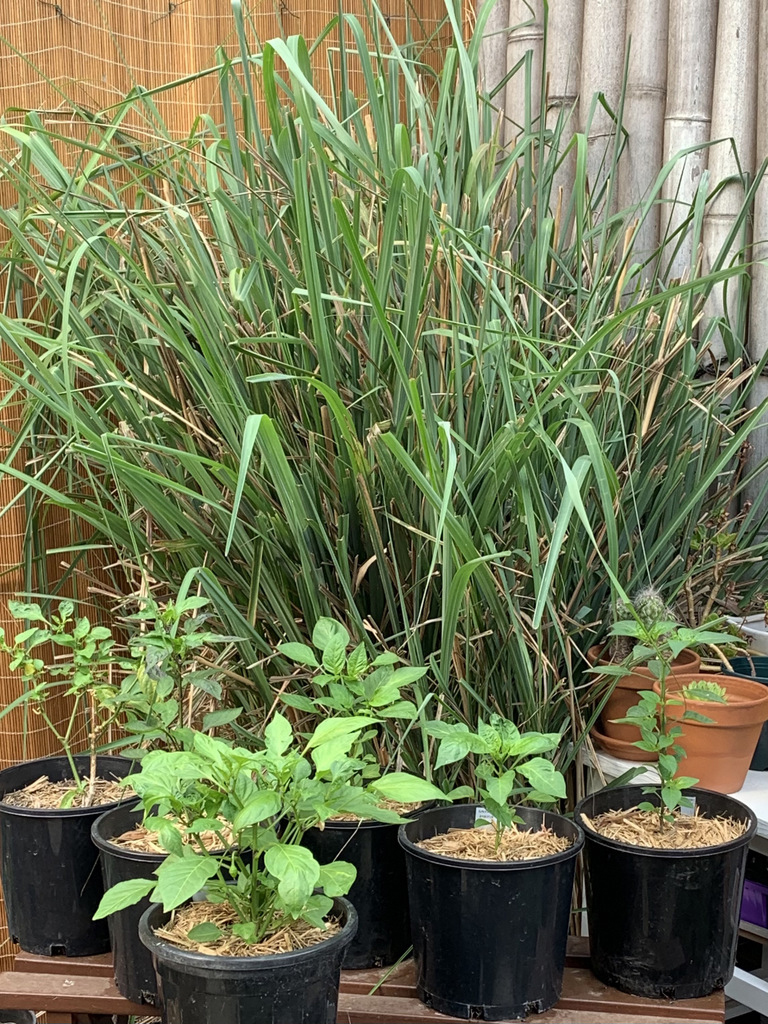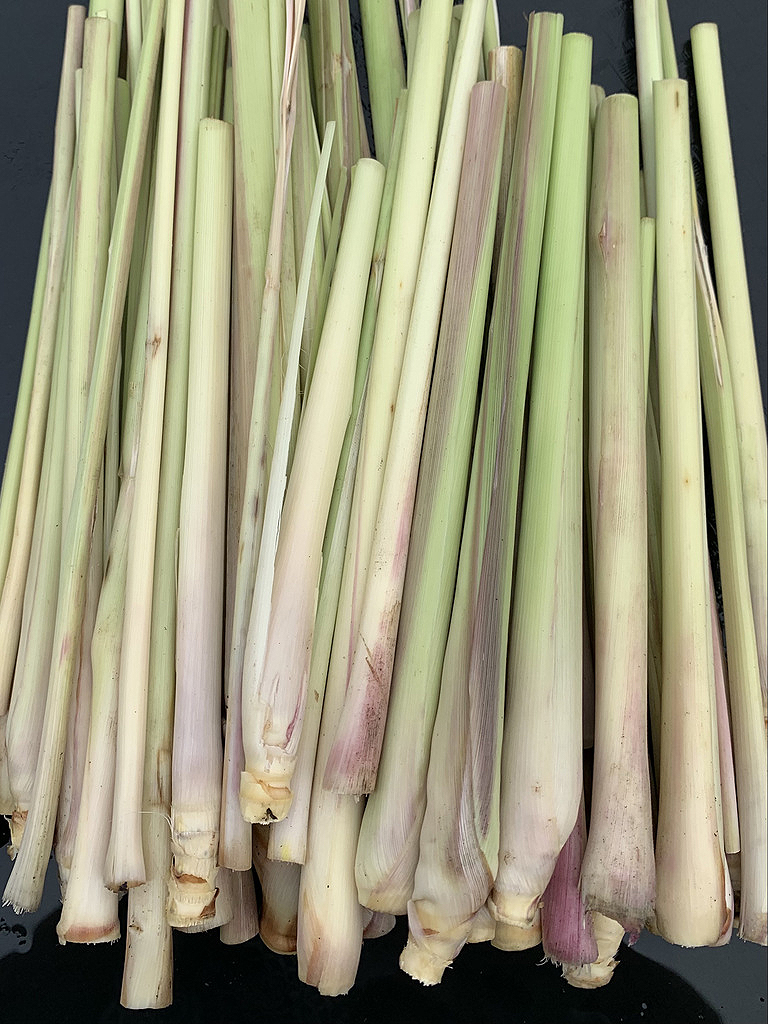Lemongrass is a tropical grass and aromatic edible herb native to India and Southeast Asia, and a low maintenance addition to an edible garden. Here’s how to grow it, eat it and drink it.

How to Grow Lemongrass – Photo © The Gourmantic Garden
As seen on Botanical Beverages: My Segment on Gardening Australia
Long before I started edible gardening, I bought some lemongrass stalks for cooking and was surprised at how much they cost. So I decided to grow my own and bought myself a lemongrass seedling from a plant nursery. I planted it straight in soil that was 5cm deep and forgot about it. Little did I know it would grow over 1.8m tall and spread 80cm wide.
When I needed that space for something else, pulling out the plant took half a day’s work. I had no idea the roots would be entangled like a dense carpet. The harvest was rather impressive as you can see in the images below. I trimmed the stalks, stored some in the freezer and replanted some this time in a large container.
GROW IT
How to Grow Lemongrass
Lemongrass is a perennial herb with sharp aromatic leaves and edible stalks used to add a zesty, citrus flavour to food and beverages. There are two common types: West Indian Lemongrass (Cymbopogon citratus) which is often used in cooking and beverages; and East Indian Lemongrass (Cymbopogon flexuosus) with purple tinges on the stems and purple seed heads.
There are three ways of growing lemongrass: from seed sown in spring, from a cutting or from dividing an existing clump. I haven’t tried growing it from seed as the germination rate can be low. I have grown mine from division and from a cutting. The herb favours warm conditions with a climate that swings between warm, dry winters and hot, wet summers. Plant in full sun to part shade, water regularly until the plant is established then it becomes drought tolerant. In my temperate Sydney climate, I am growing it in a container which I moved to a sheltered position that gets partial shade in summer and full shade in winter.
Can You Grow Lemongrass from Store-Bought Stalks

Propagating Lemongrass – Photo © The Gourmantic Garden
The short answer is yes but it takes time. Simply cut off the top of the stalks leaving about 3 cm or more and put the base in water. Change the water every couple of days and after about one month to six weeks, you’ll start to see some roots form as in the photo above. I prefer to leave them in water a little bit longer so they can form longer roots before I plant them in potting mix.
Lemongrass Plant Care
The plant tag on my original lemongrass stated that it favours moist conditions, free draining soil and generous fertilising. Aside from the odd watering here and there, I simply neglected the plant yet it thrived in 5cm deep soil in its sheltered corner against a colourbond fence.
As a clumping grass, it can grow to become unruly and it should be cut back significantly once winter has set in to allow for new growth in spring. Don’t be afraid to cut back to half its height. It’s a pretty tough plant and will reward you with lush, new green growth. I would recommend you regularly remove any dead leaves while wearing gardening gloves and long sleeves as they are very sharp and hurt much worse than a paper cut.
Harvesting Lemongrass

Lemongrass Harvest – Photo © The Gourmantic Garden
To harvest lemongrass, remove the whole stalk from the plant including the white base. This is best done by pulling or twisting, again wearing long sleeves and gardening gloves for protection.
If you neglect the plant as I had originally done, and the stalks have become dry, they pull out easily. Don’t discard them. I have many uses for them in the garden from staking plants and young seedlings, to using them a dibber, as well as a base for a DIY trellis or teepee.
Tips for Growing Lemongrass

Lemongrass in Container – Photo © The Gourmantic Garden
- Grow lemongrass in large containers and not in the ground or in a raised bed as it clumps and becomes very difficult to manage.
- Wear protective gloves and long sleeves when handling the plant as the leaves are very sharp.
- Regularly remove the outer dried leaves and if the stalks are dry, repurpose them in the garden as stakes for seedlings.
EAT IT
Culinary Uses of Lemongrass

Harvest – Photo © The Gourmantic Garden
The aromatic herb is widely used in Thai cuisine and imparts a fresh citrus flavour with a grassy note and pairs well with garlic, chilli, coriander and coconut milk. The bulb can be minced or bruised with a meat pallet to release the flavour and infused into curries, soups and desserts. The leaves can be used to make tea.
The stalks can be trimmed, cut into a smaller size and stored in the freezer until ready to use.
DRINK IT
Lemongrass in Cocktails

Vietnamojito – Photo © The Gourmantic Garden
Lemongrass has several uses in cocktails and non-alcoholic beverages. It is also a botanical used in some gins such as Mezcal Gin. As a syrup, it pairs well with the vanilla-like notes of pandan as well as coconut and chilli.
The stalks have another application in cocktails. They can be used as a stirrer, a garnish or hollowed out and used as a drinking straw, yet another sustainable use for the plant.
Want to Know More?
You’ll find more information on how to grow lemongrass, which varieties to try, how to pair it with food and spirits, and how to use lemongrass in cocktails including a full recipe in my 260+ page digital book GROW YOUR OWN COCKTAIL GARDEN available now.


